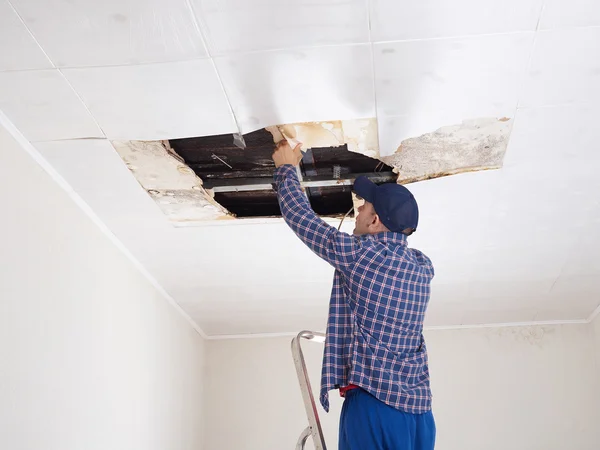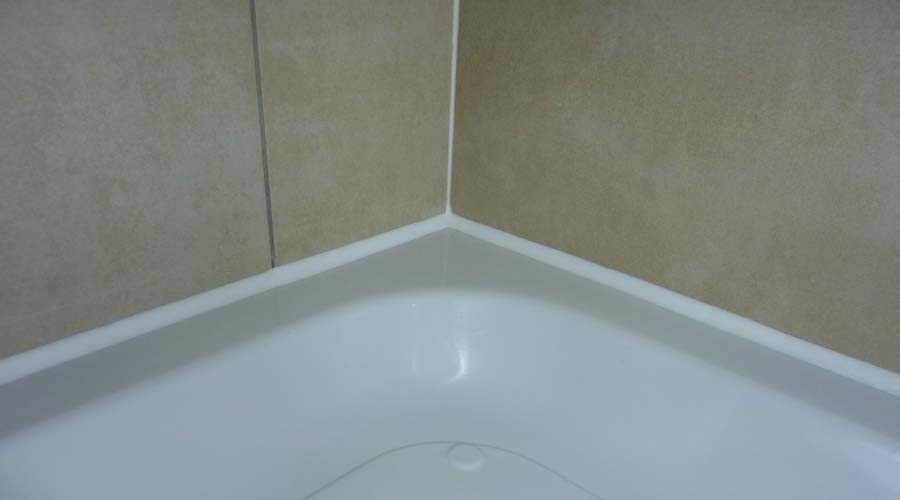Nearly everybody may have their private theory when it comes to How to Repair and Prevent Bathroom Water Damage?.

Water damage frequently takes place in the restroom as a result of the water used day-to-day. In some cases, the damages could be a little mold from the shower. Various other times, it's huge damages on your floor. Whatever it is, it is constantly good to understand the reason as well as stop it before it takes place.
This guide will certainly go through a few of the usual reasons for water damage in the shower room. We will certainly also analyze what you can do to prevent these causes from harming your restroom. Allow's dive in.
5 Usual Causes of Water Damage in Shower Rooms
These are the usual reasons you would certainly have water damage in your bathrooms as well as just how you can spot them:
Burst or Dripping Pipelines
There are numerous pipelines lugging water to different parts of your shower room. Some pipelines take water to the toilet, the sink, the taps, the shower, and also several other locations. They crisscross the tiny area of the restroom.
Occasionally, these pipelines could get corroded and also burst. Other times, human action might create them to leak. When this happens, you'll discover water in the edges of your washroom or on the wall.
To find this, watch out for gurgling wall surfaces, molds, or mildew. Call an expert emergency situation plumbing professional to fix this when it occurs.
Splits in your wall surface tilesv
Bathroom wall ceramic tiles have been specifically made for that objective. They protect the wall from moisture from people taking showers. Nevertheless, they are not unbreakable.
Occasionally, your washroom wall tiles crack and allow some wetness to leak into the wall. This might possibly ruin the wall surface if you do not take any kind of activity. If you see a split on your wall surface floor tiles, repair it immediately. Do not wait up until it ruins your wall.
Overflowing bathrooms and sinks
As humans, in some cases we make mistakes that could cause some water damage in the bathroom. For example, leaving your sink faucet on can create overruning as well as damage to other parts of the restroom with moisture.
Also, a damaged commode can trigger overflowing. For example, a broken commode take care of or various other parts of the cistern. When this happens, it could harm the flooring.
As quickly as you discover an overflowing sink or toilet, call a plumber to aid deal with it quickly.
Roof covering Leaks
In some cases, the problem of water damage to the washroom may not come from the bathroom. As an example, a roofing leak could create damage to the bathroom ceiling. You can detect the damages done by taking a look at the water stains on the ceiling.
If you locate water spots on your ceiling, check the roof covering to see if it's damaged. Then, call a specialist to assist solve the problem.
Excess Moisture
It's cool to have that lengthy shower and dash water while you dance around and imitate you're carrying out, yet often these acts could create water damage to your restroom.
Spraying water around can trigger water to go to edges and develop mold and mildews. Watch just how you spread excess dampness around, and when you do it, clean it up to stop damage.
Verdict
Water damage to your restroom can be annoying. Nevertheless, you can handle it if you stop some of the causes stated in this overview. Call a professional emergency plumbing technician if you discover any type of severe damages.
What are the common causes of water damage?
Life just isn’t possible without water. But for all its life-giving benefits, water can also be a very destructive force of nature. If you rank all the potential disasters that could hit your property, water damage will stand a very good chance of taking the top spot.
Water damage affects buildings on so many levels. When water creeps into areas of your property where it shouldn’t be, your floor could warp. Water damage also discolors beautifully painted walls. All that moisture can also lead not only to the formation of mold inside the building but also to a vermin infestation. Worst of all, water damage that isn’t immediately addressed through water damage restoration could eventually weaken the foundation of any building.
Water damage is also deceptively costly. You might think that an inch or two of water flooding your home or business wouldn’t burn a hole in your pocket, but there have been cases where that little amount of water has caused damage that cost tens of thousands of dollars to repair and restore.
The worst thing about water damage is that it can happen at any time. Let’s take a look at some of the common causes of water damage.
Severe weather
Thunderstorms, hurricanes, and other natural disasters don’t happen every day, but when they do, there’ll always be the risk of water damage striking your property.
The strong winds and heavy downpour could damage your roof, sending a certain amount of rainwater straight down into your house or business. Worse, severe weather can sometimes lead to flash flooding, especially when your property is in a flood-prone area.
Clogged gutters
Your home’s gutter system is supposed to draw rainwater away from your house. However, gutters often get blocked by leaves, branches, and other types of debris over time. When that happens, rainwater won’t be able to flow properly away from your property and will instead overflow the edges of your gutters, run down the side of the house, and cause water damage on the ceiling, walls, and floors.
Leaking pipes
A loose-fitting pipe in the kitchen sink could leak enough water to damage the cabinet underneath it. A broken pipe inside walls could make things even more complicated. The water damage such a leak can cause would be huge, as the entire wall would be water damaged, and it’ll foster the formation of an entire colony of mold.
Worse yet would be a leaking plumbing supply line or a drainage pipe in the soil underneath your concrete slab. When this happens, you’ll likely face costly repairs.
Washing machine water supply line leak
Your washing machine is fed by water supply lines that are under constant pressure. If your lines are made from braided stainless steel, then you have nothing to worry about. The problem will be if your washing machine has rubber or PVC supply lines. They can easily wear out and rupture, which means your entire laundry room will be flooded in minutes if you don’t shut off the water source in time.
https://www.thesilverlining.com/westbendcares/blog/what-are-the-common-causes-of-water-damage

What are the common causes of water damage?
Life just isn’t possible without water. But for all its life-giving benefits, water can also be a very destructive force of nature. If you rank all the potential disasters that could hit your property, water damage will stand a very good chance of taking the top spot.
Water damage affects buildings on so many levels. When water creeps into areas of your property where it shouldn’t be, your floor could warp. Water damage also discolors beautifully painted walls. All that moisture can also lead not only to the formation of mold inside the building but also to a vermin infestation. Worst of all, water damage that isn’t immediately addressed through water damage restoration could eventually weaken the foundation of any building.
Water damage is also deceptively costly. You might think that an inch or two of water flooding your home or business wouldn’t burn a hole in your pocket, but there have been cases where that little amount of water has caused damage that cost tens of thousands of dollars to repair and restore.
The worst thing about water damage is that it can happen at any time. Let’s take a look at some of the common causes of water damage.
Severe weather
Thunderstorms, hurricanes, and other natural disasters don’t happen every day, but when they do, there’ll always be the risk of water damage striking your property.
The strong winds and heavy downpour could damage your roof, sending a certain amount of rainwater straight down into your house or business. Worse, severe weather can sometimes lead to flash flooding, especially when your property is in a flood-prone area.
Clogged gutters
Your home’s gutter system is supposed to draw rainwater away from your house. However, gutters often get blocked by leaves, branches, and other types of debris over time. When that happens, rainwater won’t be able to flow properly away from your property and will instead overflow the edges of your gutters, run down the side of the house, and cause water damage on the ceiling, walls, and floors.
Leaking pipes
A loose-fitting pipe in the kitchen sink could leak enough water to damage the cabinet underneath it. A broken pipe inside walls could make things even more complicated. The water damage such a leak can cause would be huge, as the entire wall would be water damaged, and it’ll foster the formation of an entire colony of mold.
Worse yet would be a leaking plumbing supply line or a drainage pipe in the soil underneath your concrete slab. When this happens, you’ll likely face costly repairs.
Washing machine water supply line leak
Your washing machine is fed by water supply lines that are under constant pressure. If your lines are made from braided stainless steel, then you have nothing to worry about. The problem will be if your washing machine has rubber or PVC supply lines. They can easily wear out and rupture, which means your entire laundry room will be flooded in minutes if you don’t shut off the water source in time.
https://www.thesilverlining.com/westbendcares/blog/what-are-the-common-causes-of-water-damage
We had been shown that article about How to Repair and Prevent Bathroom Water Damage? through a good friend on a different web property. Are you aware of anybody else who is inquisitive about How to Repair and Prevent Bathroom Water Damage?? Why not promote it. Thanks so much for taking the time to read it.
Free Estimate